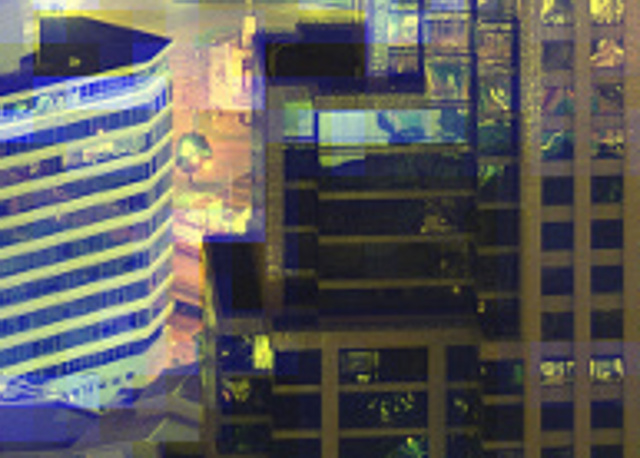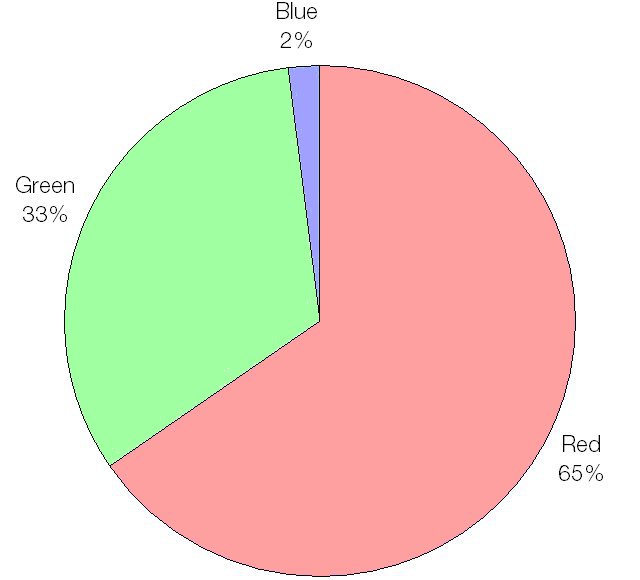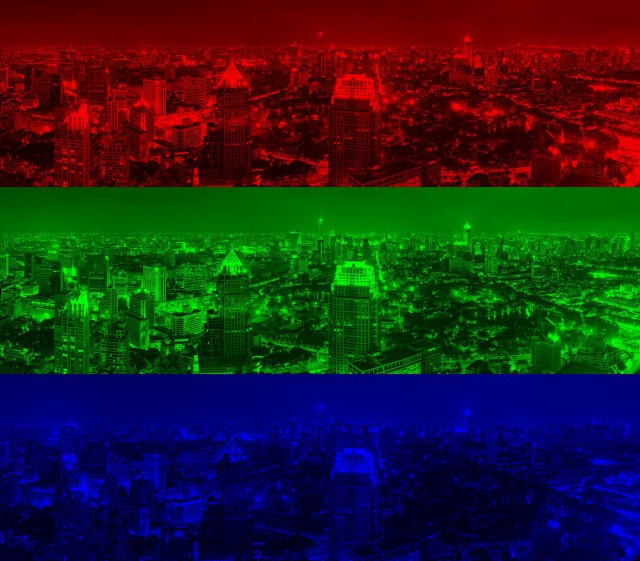Here is a image of the Bangkok skyline.
Here is the same image with the red, green and blue components shown separately.
Notice how white objects are bright in all three components, how the green park on the right of the image appears brightest in the green component, how the orange streetlights are bright in both the red and green components and so on.
Below is the same excerpt from the image but with the detail removed individually from the red, green and blue components by pixellating each by a factor of ten.
Original:
 Red detail removed:
Red detail removed:

Green detail removed:

Blue detail removed:

Notice the difference? Getting rid of the blue detail makes no real difference to the image at all. You have to look very carefully to see the change that removing the blue detail makes:

The human eye contains about 120 million “rods” and 6 million “cones”. The rods, concentrated around the fovea centralis are responsible for fine detail but only detect light and dark, not colour (in physics terms, they are photodetectors).
The cones are split into three groups, making human beings trichromats who see in three colours, (as opposed to most non-primate mammals which are monochromats that see only in black and white).

It’s this mis-match in the sensitivity of the eye to blue that causes the eye’s inability to see detail in blue.

